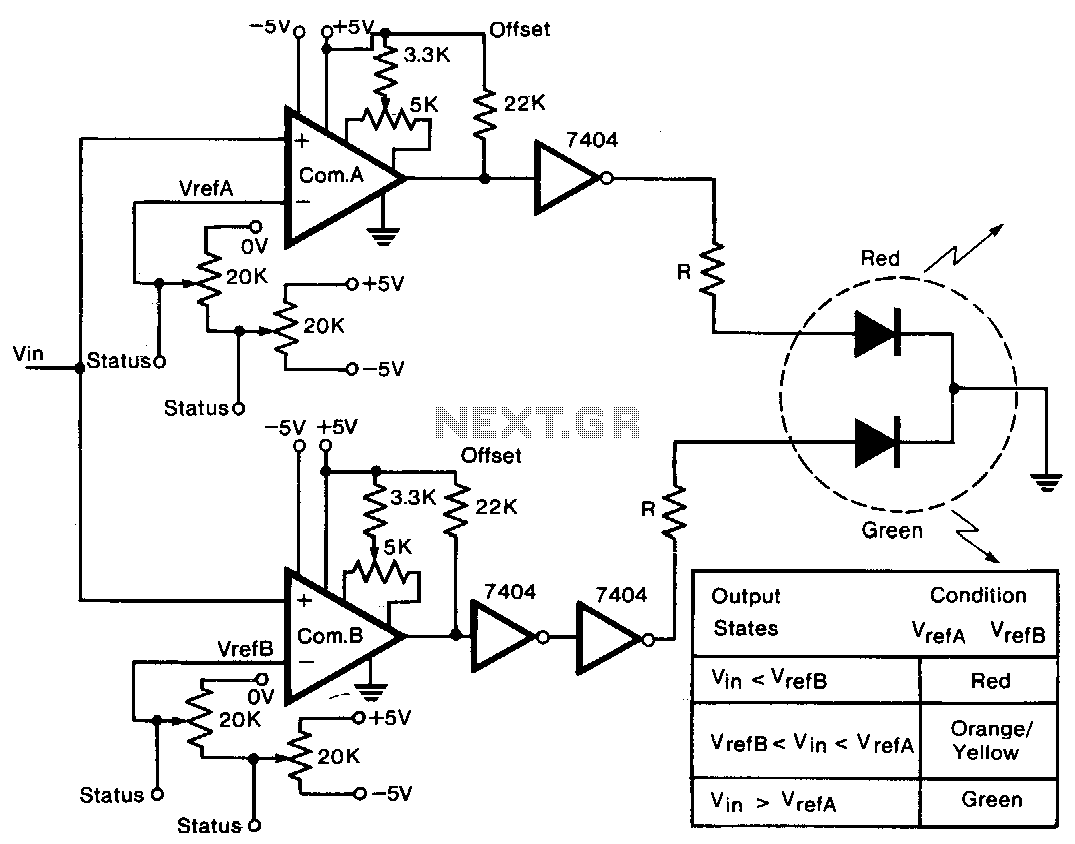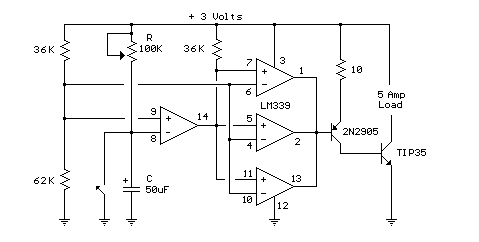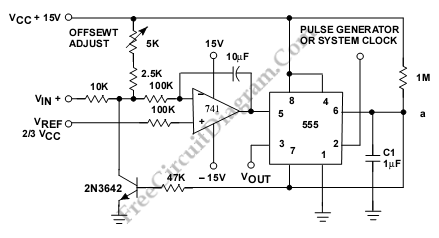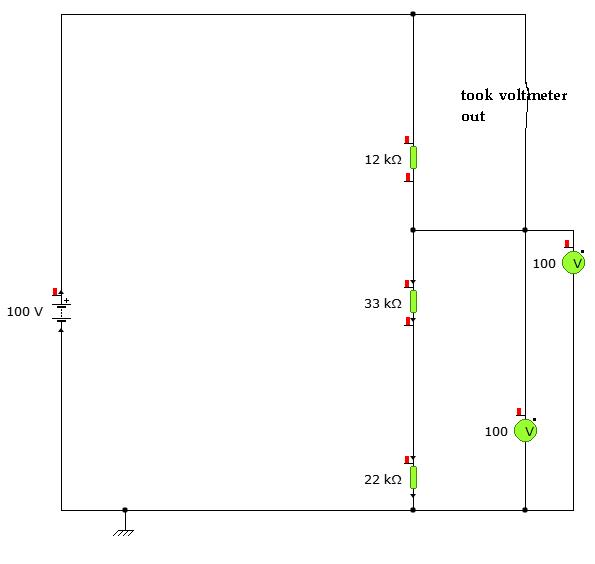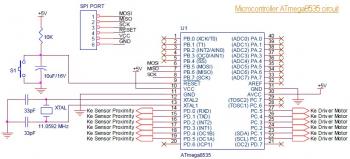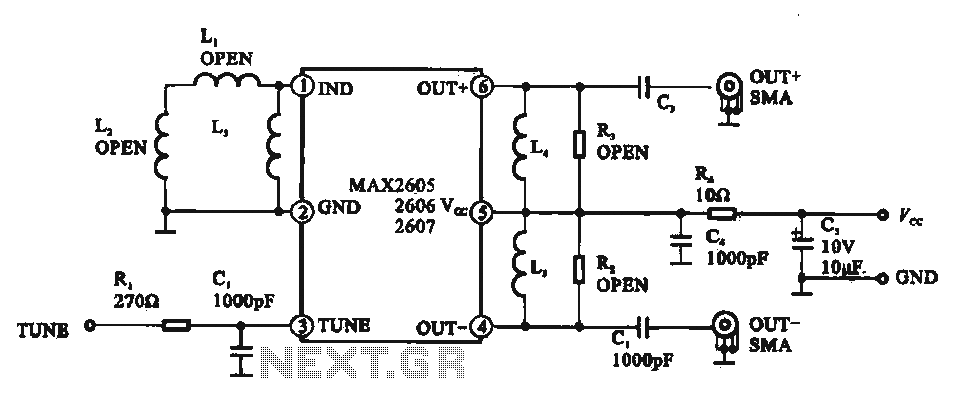
Voltage follower
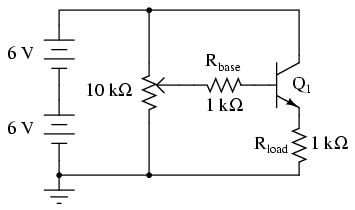
It is important to note that not all transistors have the same terminal designations or pinouts, despite having similar physical appearances. This distinction will influence how transistors are interconnected and connected to other components, making it essential to consult the manufacturer's specifications (component datasheet), typically available on the manufacturer's website. Additionally, there is a risk that the transistor's package and the manufacturer's datasheet may contain incorrect terminal identification diagrams. Therefore, it is advisable to verify pin identities using the multimeter's "diode check" function. For guidance on identifying bipolar transistor terminals with a multimeter, refer to chapter 4 of the Semiconductor volume (volume III) of this book series. It is crucial to remember that the selected transistor for a project may not have the same terminal designations depicted in the provided illustrations, which may lead to inaccuracies in the breadboard layout. The illustrations depict all TO-92 package transistors with terminals labeled "CBE": Collector, Base, and Emitter, from left to right. This labeling is accurate for the 2N2222 transistor and some others, but not universally applicable, even among NPN-type transistors. As always, verify details with the manufacturer regarding the specific components chosen for a project. With bipolar junction transistors, confirming terminal assignments with a multimeter is straightforward. The voltage follower circuit is the simplest and safest transistor amplifier circuit to construct. Its function is to deliver approximately the same voltage to a load as the input voltage to the amplifier, albeit with a significantly greater current. In essence, it has no voltage gain but does exhibit current gain. It is important to note that the negative (-) side of the power supply is represented in the schematic diagram as connected to ground, indicated by the symbol in the lower-left corner. This does not imply a physical connection to earth; rather, it signifies that this point in the circuit—and all points electrically common to it—serves as the default reference point for all voltage measurements within the circuit. Since voltage is inherently a relative quantity measured between two points, establishing a "common" reference point in a circuit allows for meaningful voltage discussions at specific points. For instance, when referring to the voltage at the base of the transistor (VB), it pertains to the voltage measured between the transistor's base terminal and the negative side of the power supply (ground), with the red probe on the base terminal and the black probe on ground. Typically, discussing voltage at a single point is not meaningful, but having a designated reference point for voltage measurements renders such statements valid. To explore this circuit, one can measure the output voltage against the input voltage for various potentiometer settings. The input voltage corresponds to the voltage at the potentiometer's wiper (voltage between the wiper and circuit ground), while the output voltage represents the load resistor voltage (voltage across the load resistor, or emitter voltage: between the emitter and circuit ground). A close correlation between these two voltages should be observed: one will be slightly higher than the other (approximately 0.6 volts), but variations in the input voltage will result in nearly equivalent changes in the output voltage. Given that the relationship between input and output changes is nearly 1:1, the AC voltage gain of this amplifier is considered to be close to 1. While this may not seem impressive, it is also important to measure the current through the base of the transistor (input current) compared to the current through the load resistor (output current).
The voltage follower circuit is a fundamental configuration in analog electronics, primarily used for impedance matching. Its design typically includes a single bipolar junction transistor (BJT) configured in a common collector arrangement. The circuit's operation hinges on the transistor's ability to provide a high input impedance at the base and a low output impedance at the emitter, thus allowing the circuit to drive loads without significant voltage drop.
In practical applications, the voltage follower circuit is employed to buffer signals, ensuring that the voltage level remains consistent while allowing for increased current delivery to the load. This is particularly useful in interfacing between high-impedance sources and low-impedance loads, where signal integrity is paramount. The schematic representation of this circuit would typically include the BJT, power supply connections, and load resistor, alongside the necessary biasing resistors to establish the operating point of the transistor.
When assembling this circuit on a breadboard, the correct identification of the transistor terminals is crucial. The collector is connected to the power supply, the emitter to the load, and the base to the input signal source through a resistor. The load resistor is then connected to ground, completing the circuit. Testing should include measuring the input and output voltages as well as the currents to verify the expected performance characteristics, ensuring that the circuit operates within the desired parameters.Beware that not all transistors share the same terminal designations, or pinouts, even if they share the same physical appearance. This will dictate how you connect the transistorstogether and to other components, so be sure to check the manufacturer`s specifications (component datasheet), easily obtained from the manufacturer`s website.
Beware that it is possible for the transistor`s package and even the manufacturer`s datasheet to show incorrect terminal identification diagrams! Double-checking pin identities with your multimeter`s "diode check" function is highly recommended. For details on how to identify bipolar transistor terminals using a multimeter, consult chapter 4 of the Semiconductor volume (volume III) of this book series.
Again, beware that the transistor you select for this experiment may not have the same terminal designations shown here, and so the breadboard layout shown in the illustration may not be correct for you. In my illustrations, I show all TO-92 package transistors with terminals labeled "CBE": Collector, Base, and Emitter, from left to right.
This is correct for the model 2N2222 transistor and some others, but not for all; not even for all NPN-type transistors! As usual, check with the manufacturer for details on the particular component(s) you choose for a project.
With bipolar junction transistors, it is easy enough to verify terminal assignments with a multimeter. The voltage follower is the safest and easiest transistor amplifier circuit to build. Its purpose is to provide approximately the same voltage to a load as what is input to the amplifier, but at a much greater current.
In other words, it has no voltage gain, but it does have current gain. Note that the negative (-) side of the power supply is shown in the schematic diagram to be connected to ground, as indicated by the symbol in the lower-left corner of the diagram. This does not necessarily represent a connection to the actual earth. What it means is that this point in the circuit - and all points electrically common to it - constitute the default reference point for all voltage measurements in the circuit.
Since voltage is by necessity a quantity relative between two points, a "common" point of reference designated in a circuit gives us the ability to speak meaningfully of voltage at particular, single points in that circuit. For example, if I were to speak of voltage at the base of the transistor (VB), I would mean the voltage measured between the transistor`s base terminal and the negative side of the power supply (ground), with the red probe touching the base terminal and the black probe touching ground.
Normally, it is nonsense to speak of voltage at a single point, but having an implicit reference point for voltage measurements makes such statements meaningful: Build this circuit, and measure output voltage versus input voltage for several different potentiometer settings. Input voltage is the voltage at the potentiometer`s wiper (voltage between the wiper and circuit ground), while output voltage is the load resistor voltage (voltage across the load resistor, or emitter voltage: between emitter and circuit ground).
You should see a close correlation between these two voltages: one is just a little bit greater than the other (about 0. 6 volts or so ), but a change in the input voltage gives almost equal change in the output voltage. Because the relationship between input change and output change is almost 1:1, we say that the AC voltage gain of this amplifier is nearly 1.
Not very impressive, is it Now measure current through the base of the transistor (input current) versus current through the load resistor (output current). Before you break the circuit and insert your ammeter to take these measureme 🔗 External reference
The voltage follower circuit is a fundamental configuration in analog electronics, primarily used for impedance matching. Its design typically includes a single bipolar junction transistor (BJT) configured in a common collector arrangement. The circuit's operation hinges on the transistor's ability to provide a high input impedance at the base and a low output impedance at the emitter, thus allowing the circuit to drive loads without significant voltage drop.
In practical applications, the voltage follower circuit is employed to buffer signals, ensuring that the voltage level remains consistent while allowing for increased current delivery to the load. This is particularly useful in interfacing between high-impedance sources and low-impedance loads, where signal integrity is paramount. The schematic representation of this circuit would typically include the BJT, power supply connections, and load resistor, alongside the necessary biasing resistors to establish the operating point of the transistor.
When assembling this circuit on a breadboard, the correct identification of the transistor terminals is crucial. The collector is connected to the power supply, the emitter to the load, and the base to the input signal source through a resistor. The load resistor is then connected to ground, completing the circuit. Testing should include measuring the input and output voltages as well as the currents to verify the expected performance characteristics, ensuring that the circuit operates within the desired parameters.Beware that not all transistors share the same terminal designations, or pinouts, even if they share the same physical appearance. This will dictate how you connect the transistorstogether and to other components, so be sure to check the manufacturer`s specifications (component datasheet), easily obtained from the manufacturer`s website.
Beware that it is possible for the transistor`s package and even the manufacturer`s datasheet to show incorrect terminal identification diagrams! Double-checking pin identities with your multimeter`s "diode check" function is highly recommended. For details on how to identify bipolar transistor terminals using a multimeter, consult chapter 4 of the Semiconductor volume (volume III) of this book series.
Again, beware that the transistor you select for this experiment may not have the same terminal designations shown here, and so the breadboard layout shown in the illustration may not be correct for you. In my illustrations, I show all TO-92 package transistors with terminals labeled "CBE": Collector, Base, and Emitter, from left to right.
This is correct for the model 2N2222 transistor and some others, but not for all; not even for all NPN-type transistors! As usual, check with the manufacturer for details on the particular component(s) you choose for a project.
With bipolar junction transistors, it is easy enough to verify terminal assignments with a multimeter. The voltage follower is the safest and easiest transistor amplifier circuit to build. Its purpose is to provide approximately the same voltage to a load as what is input to the amplifier, but at a much greater current.
In other words, it has no voltage gain, but it does have current gain. Note that the negative (-) side of the power supply is shown in the schematic diagram to be connected to ground, as indicated by the symbol in the lower-left corner of the diagram. This does not necessarily represent a connection to the actual earth. What it means is that this point in the circuit - and all points electrically common to it - constitute the default reference point for all voltage measurements in the circuit.
Since voltage is by necessity a quantity relative between two points, a "common" point of reference designated in a circuit gives us the ability to speak meaningfully of voltage at particular, single points in that circuit. For example, if I were to speak of voltage at the base of the transistor (VB), I would mean the voltage measured between the transistor`s base terminal and the negative side of the power supply (ground), with the red probe touching the base terminal and the black probe touching ground.
Normally, it is nonsense to speak of voltage at a single point, but having an implicit reference point for voltage measurements makes such statements meaningful: Build this circuit, and measure output voltage versus input voltage for several different potentiometer settings. Input voltage is the voltage at the potentiometer`s wiper (voltage between the wiper and circuit ground), while output voltage is the load resistor voltage (voltage across the load resistor, or emitter voltage: between emitter and circuit ground).
You should see a close correlation between these two voltages: one is just a little bit greater than the other (about 0. 6 volts or so ), but a change in the input voltage gives almost equal change in the output voltage. Because the relationship between input change and output change is almost 1:1, we say that the AC voltage gain of this amplifier is nearly 1.
Not very impressive, is it Now measure current through the base of the transistor (input current) versus current through the load resistor (output current). Before you break the circuit and insert your ammeter to take these measureme 🔗 External reference
